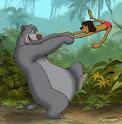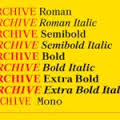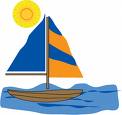
| Next | Previous | Index | Tellout Home |
38. Flashcard Presentation
Television Screen Shape
 Flashcards produced from card stock can make an excellent children's presentation. For example, you can cut out the flashcards for Mister Square each about 24" by 18" and trim the corners to a television screen shape! If I know I will use the flashcards repeatedly, I cover them with a transparent adhesive film used for a book covering as protection. Cutting out gummed paper to form pictures or for bubble lettering gives the maximum color and contrast. Excellent examples of this presentation technique are the stories like Mine Twice Over found in section four of this handbook under the children's section. Once you start on this system, you will find that you will be able to use the same cards repeatedly in different flashcard stories to significant effect. Picture flashcards like the Jungle Book Stories can communicate a message to little children in a way that words cannot. If words cannot adequately describe some object, it may be better to draw a picture than to explain it. Little children, who cannot read, can be brought into a story in this way. These pictures on cards are sometimes known simply as "flashcards." There are several basic types of flashcards. The purchased picture book type as in "The Jungle Book Story" by English author Rudyard Kipling (1869-1936) shows animals in the jungle which take on human personalities and interact together. These became very popular, and Baloo the bear, Shere Khan, the tiger, and Mowgli the "man-cub," for example, were used by the Scout Movement as names for leaders. Later television cartoons also illustrated the same stories and characters. Kipling wrote these stories for his daughter Josephine who died from pneumonia in 1899, aged six from his experiences in India. The illustrated storybooks tell tales in colorful picture form, from most bookshops. ✞
Flashcards produced from card stock can make an excellent children's presentation. For example, you can cut out the flashcards for Mister Square each about 24" by 18" and trim the corners to a television screen shape! If I know I will use the flashcards repeatedly, I cover them with a transparent adhesive film used for a book covering as protection. Cutting out gummed paper to form pictures or for bubble lettering gives the maximum color and contrast. Excellent examples of this presentation technique are the stories like Mine Twice Over found in section four of this handbook under the children's section. Once you start on this system, you will find that you will be able to use the same cards repeatedly in different flashcard stories to significant effect. Picture flashcards like the Jungle Book Stories can communicate a message to little children in a way that words cannot. If words cannot adequately describe some object, it may be better to draw a picture than to explain it. Little children, who cannot read, can be brought into a story in this way. These pictures on cards are sometimes known simply as "flashcards." There are several basic types of flashcards. The purchased picture book type as in "The Jungle Book Story" by English author Rudyard Kipling (1869-1936) shows animals in the jungle which take on human personalities and interact together. These became very popular, and Baloo the bear, Shere Khan, the tiger, and Mowgli the "man-cub," for example, were used by the Scout Movement as names for leaders. Later television cartoons also illustrated the same stories and characters. Kipling wrote these stories for his daughter Josephine who died from pneumonia in 1899, aged six from his experiences in India. The illustrated storybooks tell tales in colorful picture form, from most bookshops. ✞
Plastic-Graph Letters
 The plastic-graph letters system is an alphabet of thin plastic letters that adhere to a display board or glass sheet by surface tension. The Plastic-Graph letters system depends on the natural surface tension between the plastic letters and the board for its effectiveness. This phenomenon creates a natural adhesion between the very smooth thin plastic letters and the board's polished surface or even material like glass. This same surface tension allows some insects like "water striders" to float and slide on a water surface! "Surface tension is the elastic tendency of a fluid surface, which makes it acquire the least surface area possible." The thin plastic letters use the same kind of internal forces called "surface energy" to bond the thin plastic to the smooth surface. Alphabets come in different attractive colors, sizes, and typefaces and are available at a very reasonable cost from a sizeable stationery supplier. ✞
The plastic-graph letters system is an alphabet of thin plastic letters that adhere to a display board or glass sheet by surface tension. The Plastic-Graph letters system depends on the natural surface tension between the plastic letters and the board for its effectiveness. This phenomenon creates a natural adhesion between the very smooth thin plastic letters and the board's polished surface or even material like glass. This same surface tension allows some insects like "water striders" to float and slide on a water surface! "Surface tension is the elastic tendency of a fluid surface, which makes it acquire the least surface area possible." The thin plastic letters use the same kind of internal forces called "surface energy" to bond the thin plastic to the smooth surface. Alphabets come in different attractive colors, sizes, and typefaces and are available at a very reasonable cost from a sizeable stationery supplier. ✞
Surface Tension
 Plastic-Graph, which is the proprietary name for this material, uses this particular property for highlighting keywords during a talk. The plastic letters are pre-formed as no artistic skills are required aside from placing them in the correct position on the board or shiny surface. In preparation, the lettering may be set up on pieces of transparent film or tissue paper. Use extra care to ensure they are straight on the board. Each keyword used in a plastic-graph talk may be separated from the next with a sheet of tissue paper before placing it on the display board. For further information, see also Communicating Word Meanings. ✞
Plastic-Graph, which is the proprietary name for this material, uses this particular property for highlighting keywords during a talk. The plastic letters are pre-formed as no artistic skills are required aside from placing them in the correct position on the board or shiny surface. In preparation, the lettering may be set up on pieces of transparent film or tissue paper. Use extra care to ensure they are straight on the board. Each keyword used in a plastic-graph talk may be separated from the next with a sheet of tissue paper before placing it on the display board. For further information, see also Communicating Word Meanings. ✞
Effective Communication
 Effective communication in conveying meaning to a large or a small group with either a plasti-graph or another lettering system has many benefits. The website skillsyouneed.com suggests, "Effective communication skills are fundamental to success in many aspects of life. Many jobs require strong communication skills, and people with good communication skills usually enjoy better interpersonal relationships with friends and family. Effective communication is a key interpersonal skill, and learning how we can improve our communication has many benefits." Communication is a two-way process, and the act of conveying meanings from one entity or another through words, signs, symbols, and pictures. How we send and receive messages is vitally important. The Plasti graph or other preformed words must be positioned the right way up and in the correct location the first time to communicate effectively! As with all other visual aids, practicing what you will do and say before the event is essential. We must learn how to communicate word meanings professionally. Words, however, are not always the best way to communicate! Off the west coast of Africa, in the Canary Islands group, the inhabitants have an unusual form of whistle communication. Instead of using words, the Silbo people on the island of La Gomera use a whistle language dating back to the original inhabitants. The whistles carry long distances in the mountainous landscape, and echo from one cliff to the next with the latest news or gossip. Both fingers and lips manipulate to form meaningful sounds in this extraordinary communication oddity. There are sometimes other ways for the Christian worker to communicate word meanings different than with words. ✞
Effective communication in conveying meaning to a large or a small group with either a plasti-graph or another lettering system has many benefits. The website skillsyouneed.com suggests, "Effective communication skills are fundamental to success in many aspects of life. Many jobs require strong communication skills, and people with good communication skills usually enjoy better interpersonal relationships with friends and family. Effective communication is a key interpersonal skill, and learning how we can improve our communication has many benefits." Communication is a two-way process, and the act of conveying meanings from one entity or another through words, signs, symbols, and pictures. How we send and receive messages is vitally important. The Plasti graph or other preformed words must be positioned the right way up and in the correct location the first time to communicate effectively! As with all other visual aids, practicing what you will do and say before the event is essential. We must learn how to communicate word meanings professionally. Words, however, are not always the best way to communicate! Off the west coast of Africa, in the Canary Islands group, the inhabitants have an unusual form of whistle communication. Instead of using words, the Silbo people on the island of La Gomera use a whistle language dating back to the original inhabitants. The whistles carry long distances in the mountainous landscape, and echo from one cliff to the next with the latest news or gossip. Both fingers and lips manipulate to form meaningful sounds in this extraordinary communication oddity. There are sometimes other ways for the Christian worker to communicate word meanings different than with words. ✞
Words Alongside Pictures
 By adding words alongside picture flashcards, you can import other meaning into a presentation for children or adults. Hosea 14.2 advises the excellent communicator to, "Take words with you." By adding words alongside picture flashcards, you can import new meaning to a story or seminar. Illustrations are best on the fluorescent type of board, which is slightly more expensive than ordinary board, but well worth it using both sides of the material. You can be use cards as a challenge at the end of a talk. You can remove pieces of the card to add significance, such as in the "doubt mask." Careful preparation will pay significant dividends for both the user in organizing their thoughts carefully and for the viewer who has a visual presentation and a description. These kinds of words and picture flashcards are eminently portable and ideal, where other visual equipment may not be acceptable or practical. Unlike other aids, they are compact, easy to use, and do not require a stand or additional support. ✞
By adding words alongside picture flashcards, you can import other meaning into a presentation for children or adults. Hosea 14.2 advises the excellent communicator to, "Take words with you." By adding words alongside picture flashcards, you can import new meaning to a story or seminar. Illustrations are best on the fluorescent type of board, which is slightly more expensive than ordinary board, but well worth it using both sides of the material. You can be use cards as a challenge at the end of a talk. You can remove pieces of the card to add significance, such as in the "doubt mask." Careful preparation will pay significant dividends for both the user in organizing their thoughts carefully and for the viewer who has a visual presentation and a description. These kinds of words and picture flashcards are eminently portable and ideal, where other visual equipment may not be acceptable or practical. Unlike other aids, they are compact, easy to use, and do not require a stand or additional support. ✞
"Flashcard Presentation"
by Ron Meacock © 1982-2021
| ^Top Page | Next | Previous |